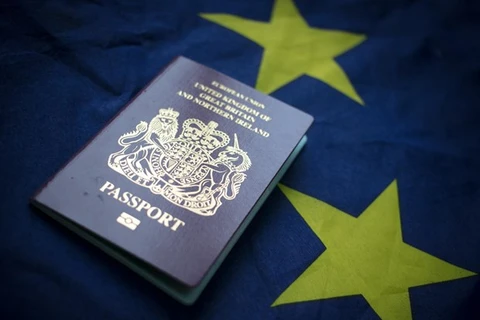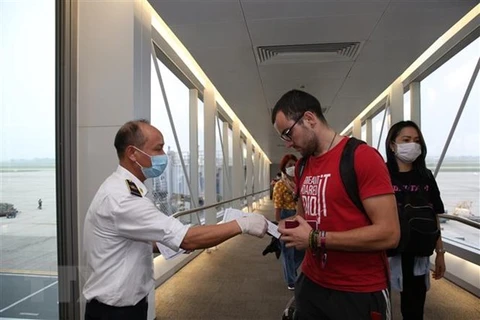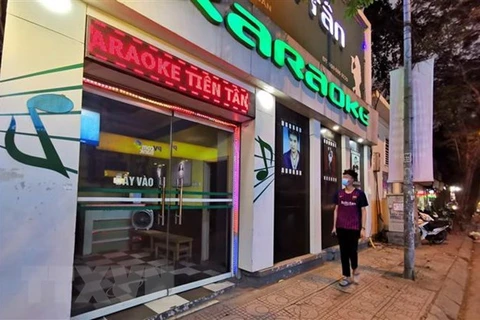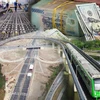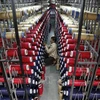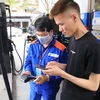Hanoi, (VNA) – The eruption of the COVID-19 pandemic caused by the SARS-CoV-2 virus all over the world has made severe impacts on socio-economic development. In particular, transport enterprises are suffering from sizeable losses.
So is there any scenario for the sector to survive the pandemic?
Airplanes and coaches lay idle en mass, airports and coach terminals are deserted. The transport sector is facing an unprecedented crisis.
Experts predict that there is unlikely any opportunity for the sector to recover soon, not to mention the case when difficulties caused by COVID-19 will last until 2021.
Airplanes, coaches lay idle
Since erupting in Wuhan (China) and rapidly spreading globally with fast rising numbers of infections and deaths, COVID-19 has become an obsession of many people and countries.
Travel restrictions imposed to curb the spread of the pandemic have pushed many airlines in Asia into crisis, even to the brink of bankruptcy. According to the International Air Transport Association (IATA), air carriers globally expect losses of 63 billion USD in revenues this year, down 11 percent from last year. Carriers in China, where the pandemic began, will lose 22.2 billion USD.
The latest estimate of the Civil Aviation Administration of Vietnam (CAAV) put losses of Vietnamese airlines at 25 trillion VND (1.08 billion USD) instead of 10 trillion VND as estimated half a month ago. The figure is certain to rise due to the pandemic continuing to spread worldwide, including many key markets of Vietnamese airlines such as northeast Asia and Europe.
Duong Tri Thanh, CEO of Vietnam Airlines, stressed that the pandemic’s impact is unprecedented in the aviation industry’s history. As there are no passengers, all flights have ceased. Among Vietnam Airlines’ 100 aircraft, 40 have been grounded.
“The aviation and tourism sectors were the first to suffer from the immediate impact of the pandemic. In the current situation, when schools are closed, putting off the end of the academic year, there is also no peak summer season for domestic travel,” Thanh said.
According to Vietnam Airlines’ report, besides having no passengers on routes to China and the Republic of Korea as all those routes are suspended, the carrier also sees a remarkable drop in passenger volume on routes to Europe, Australia, Japan and Southeast Asia as well as on domestic routes due to the public’s fear of disease.
“The reduction in flights resulted in falling revenues and profits of the carrier and its 17 member companies, while putting impact on other activities such as the use of aircraft, jobs of pilots and flight attendants, financial matters and contracts with suppliers,” Thanh added.
[Finding opportunities in risk: transport sector restructuring]
The pandemic has pushed the aviation sector backward 3-4 years and caused Vietnam Airlines’ accumulated assets over the past 4-5 years to evaporate.
Sharing the same fate, passenger and cargo transportation by land and railway is also going downhill.
Vu Anh Minh, Chairman of the Council of Members of Vietnam Railway, said the corporation’s business outcomes have been badly affected by COVID-19, with transport and trade activities the hardest hit.
“VNR has envisioned losses of more than 160 billion VND in 2020, but the real figure will be higher as business situation continues to worsen. Our production and business targets are certainly to be affected, with decreases of at least 20 percent,” Minh said.
Despite discounts, passengers still refuse to travel
According to Nguyen Van Huyen, Director General of the Directorate for Roads of Vietnam (
“Many transport companies want to cease operation as there are few passengers and revenues are not sufficient to pay for costs. However, they still struggle to maintain operation for fear of having their licences withdrawn if operating under 70 percent of capacity. Terminals are also in difficulty, because they have to pay interest for loans, insurance and wage for employees while the number of coaches running decreases,” Huyen said.
Amid those difficulties, transport firms tried to stimulate demand through various promotional campaigns. Airlines offered biggest ever fare discounts, even zero VND fares for many domestic and international flights.
 Air tickets, despite big discounts, are still hard to sell with little of hope for “rescue” from domestic passengers
Air tickets, despite big discounts, are still hard to sell with little of hope for “rescue” from domestic passengers However, concern about COVID-19, plus high tax and fees, is an obstacle, and air tickets, despite big discounts, are still hard to sell with little of hope for “rescue” from domestic passengers.
Tran Ngoc Van, a resident in Hanoi’s Hoang Mai district, learnt that return airfare on the Hanoi-Ho Chi Minh City was only about 400,000 VND (17.25 USD), but she still hesitated to buy, because if tax and fees are added, the total fare will amount to one million VND.
“Though the basic fare has been cut remarkably, airport tax and fees remain high, pushing up the total cost and deterring many from buying,” Van said, adding that the complicated development of the pandemic also make many worry when travelling.
Amid heaped up problems, many transport firms would have to leave the market if the pandemic is not contained early, according to experts.
Food delivery service is the only thriving business
Due to people refraining from going outside amid COVID-19, taxi service faces gloomy business but the food delivery service offered through ride-hailing apps such as Grabfood, Now and GoViet has experienced a boom.
Drivers said instead of passengers, there are more people ordering food to be delivered to their home or workplace.
“I can earn between 300,000 – 400,000 VND a day delivering food. The number of orders usually surges by two, even three times in the peak hours in the morning and evening,” said Nguyen Van Hai, a Grab driver in Hanoi.
He said at some time, there are more drivers waiting at food shops to fill orders of customers than eat-in customers./.


